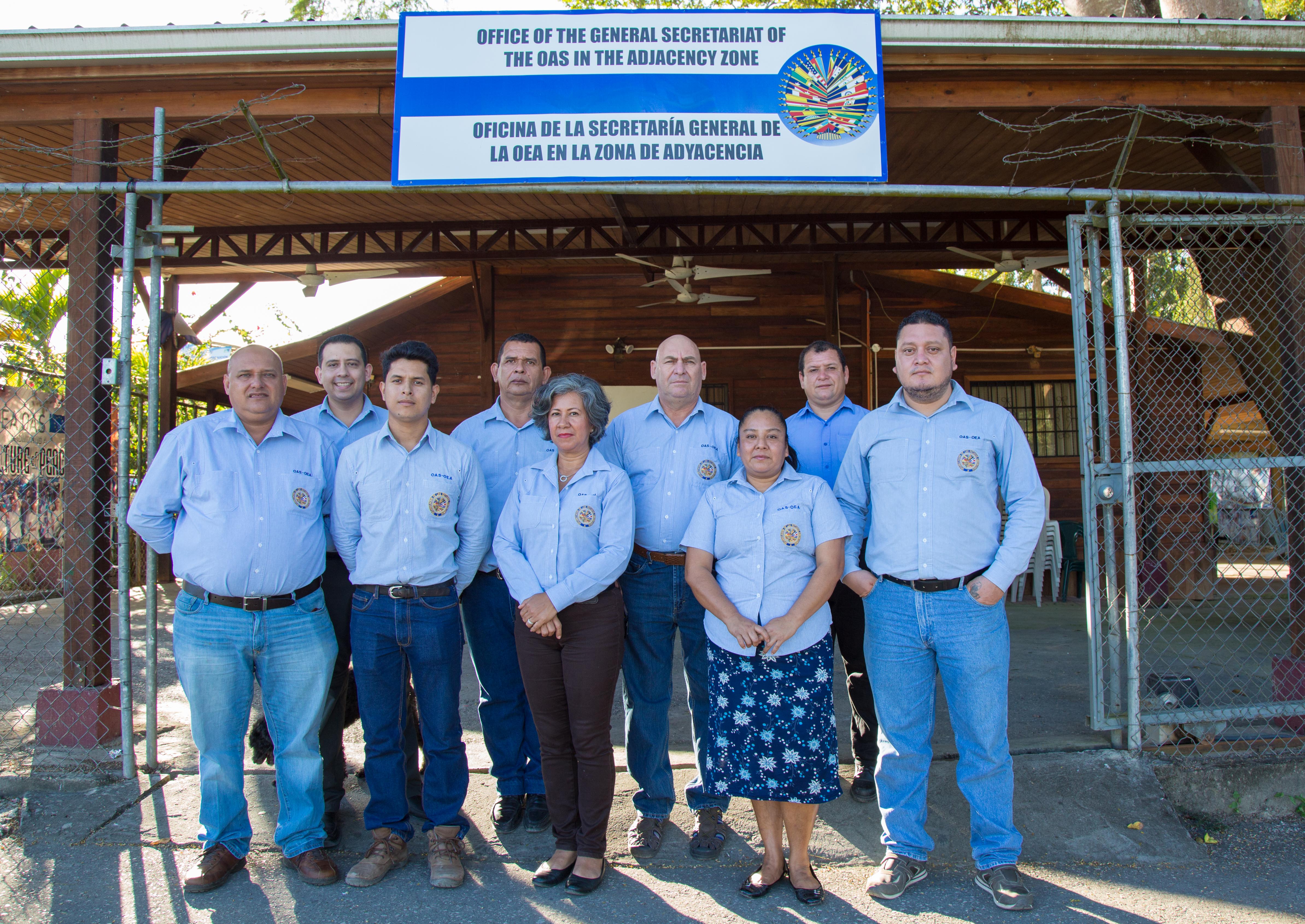
In March 2000, the governments of Belize and Guatemala restarted talks on their longstanding territorial differendum, under the auspices of the Secretary General of the Organization of American States. On November 8th 2000, Belize and Guatemala signed the first Agreement on Confidence Building Measures, through which the two parties agreed to respect an "Adjacency Zone" extending one kilometer east and west from the border, denominated the “Adjacency Line.” On February 7, 2003, the Foreign Ministers of Belize and Guatemala signed a second Agreement to Establish a Transition Process and Confidence-Building Measures, which was later amended in September 2005. Central to this agreement was the establishment of the OAS Office in the Adjacency Zone for the purpose of fostering community-to-community contacts across the Adjacency Line, and verifying any transgression of the established confidence-building measures and any incidents which may occur in that Zone.
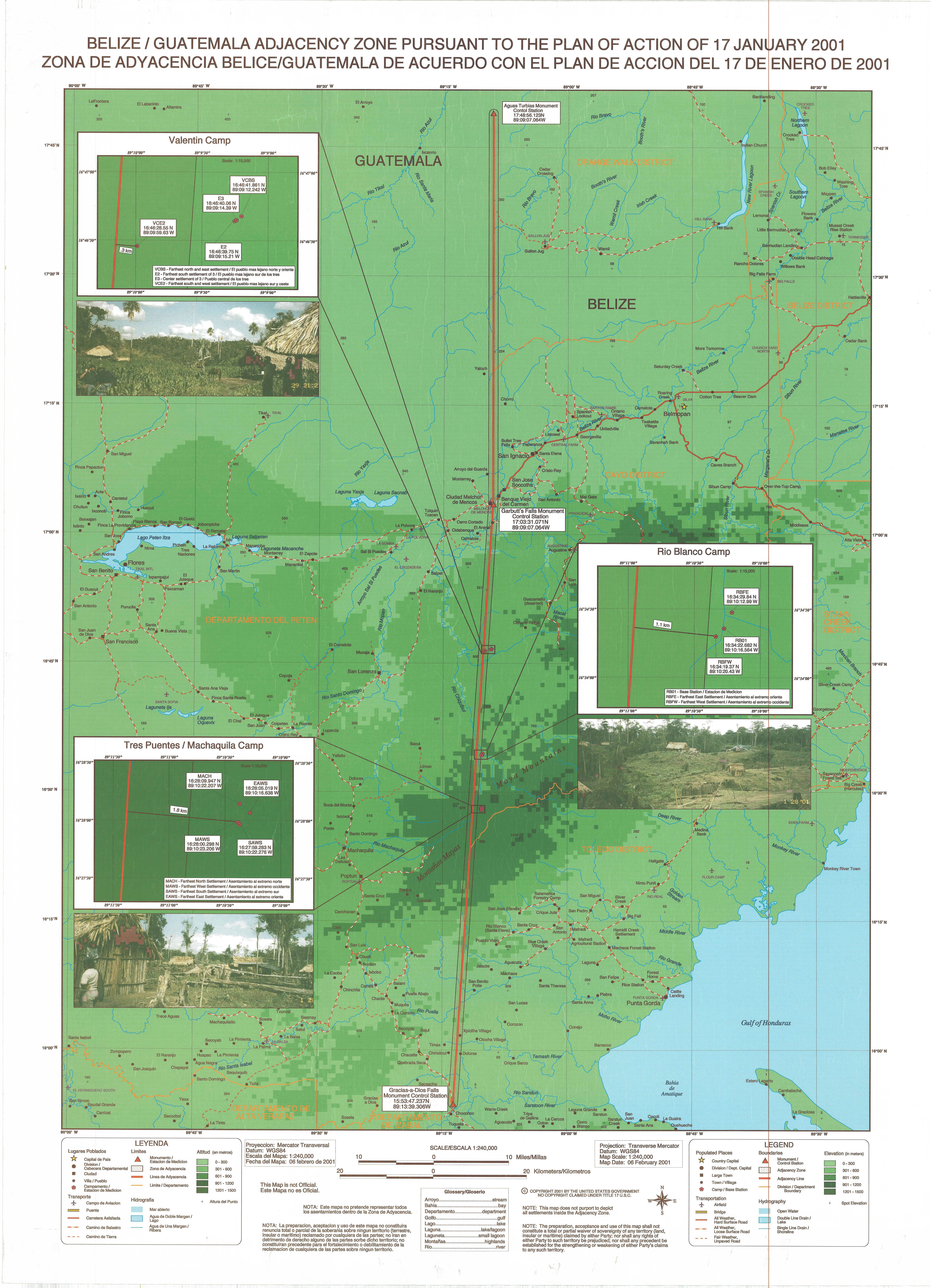
The Office is charged with various activities, of which verifications, their follow-up and preparation of reports on any incident in the Adjacency Zone (AZ) are not only the most important regular activity but also provide the means to ensure a constant presence among the communities in the area. Their most tangible result is to detect any anomaly or conflict in its early stages, in order to respond immediately and thus prevent an escalation of the conflict that could damage relations between communities, the security and armed forces, as well as between the two countries. Verifications include an investigation of the geographic location of the events, its protagonists, and the parties affected; a determination of the nature of the incident; an assessment of the situation following the incident; ongoing follow-up of the case; and reporting to the respective officials of each country. These reports are submitted to both Foreign Ministries. It is important to note that some verifications demand a high level of precision in terms of cartography and coordinates reading, particularly in cases where the verification sites are very close to the Adjacency Line. In these cases, the Pan American Institute of Geography and History (PAIGH) supports the efforts of the OAS/AZ Office by providing experts and specialized equipment to ensure the utmost accuracy of the data. The PAIGH with the support of the OAS also offers GPS workshops to OAS staff, as well as to the Belize Defense Force (BDF) and Guatemalan Army (GA) Officers. The OAS/AZ Office conducts approximately 22 verifications on an annual basis, the majority of which are carried out in the jungle and rural areas under difficult circumstances where access to the sites where incidents occur is highly challenging. Visits to the sites of the incidents usually take days and are carried out by foot, mule or small rowing boats. The OAS/AZ Office is also mandated to promote increased communication and coordination, as well as rapprochement, between the officials of Belize and Guatemala, diverse government entities, both local and central, and the communities within the Adjacency Zone. Specifically, the OAS/AZ Office coordinates, organizes and hosts tri-monthly Operational Coordination Meetings between the Belize Defense Forces (BDF) and the Guatemalan Army (GA) to exchange information about the security situation in the Adjacency Zone, examine specific incidents involving either forces and to schedule link patrols. Likewise, the Office advances a Culture of Peace Project on an annual basis, which brings students and children that inhabit within the AZ together under one roof to partake in music and art workshops that not only teach the participants artistic and music skills but also foster sentiments of friendship, brotherhood, peace and tolerance.
In the same manner the OAS/AZ Office is responsible for coordinating regular meetings and organizing training workshops for other relevant actors operating within the Adjacency Zone, such as for mayors, municipal authorities, police officers and customs and border management officials, natural disaster response bodies, and institutions responsible for forest reserves. The objective of these meetings and workshops is to promote a continuous interaction, cooperation and dialogue between relevant governmental and nongovernmental authorities of Belize and Guatemala, as well as to provide them with a better understanding of their responsibilities and role in strengthening the confidence-building measures in force. Regular interaction and information sharing through these initiatives help develop bonds and bilateral team efforts in specific action areas.
The most important duties that the Office has been assigned, in compliance with the Agreement on Confidence Building Measures, are to:
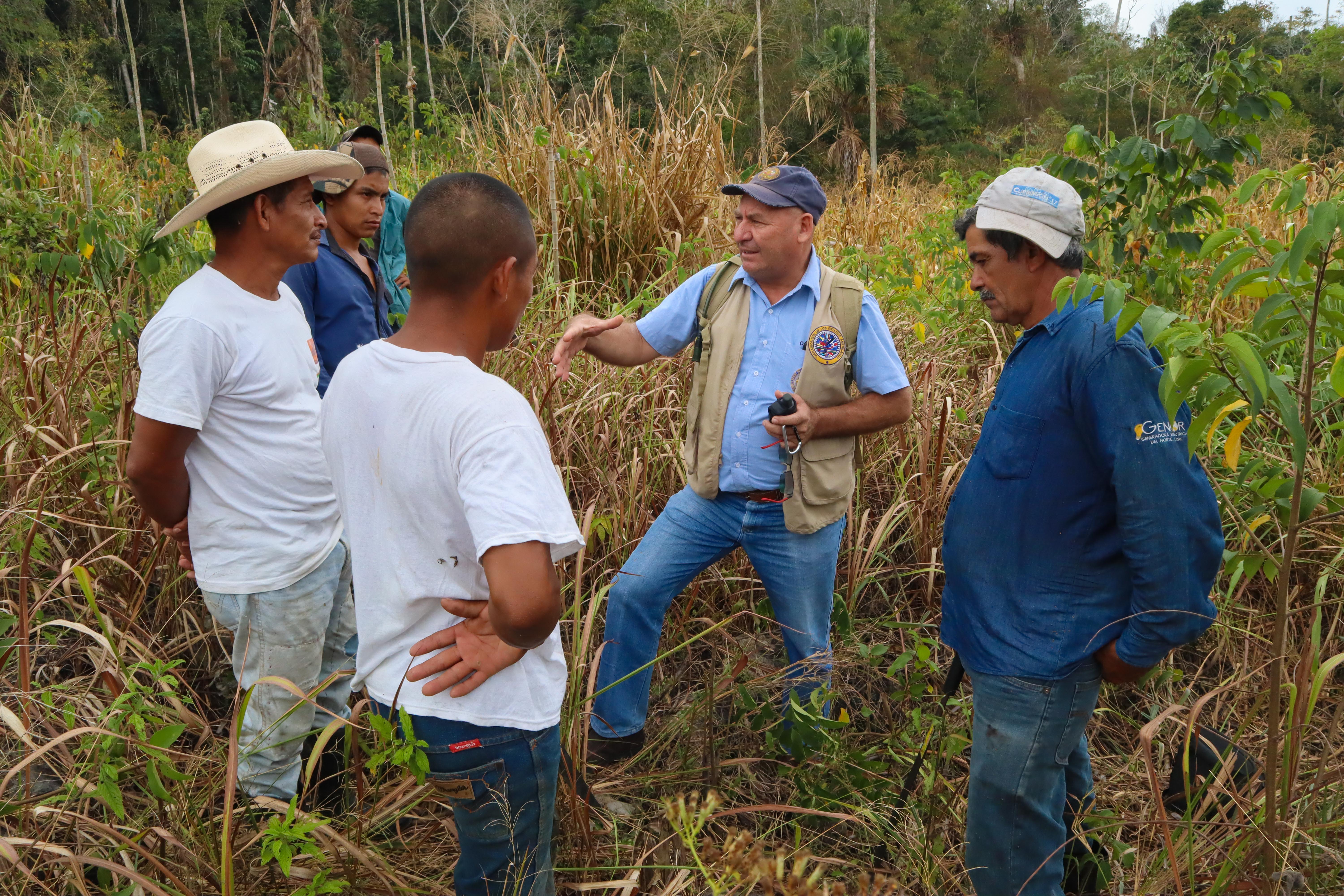 |
The OAS/AZ Office conducts approximately 22 verifications yearly. The verifications basically consist of two types of actions: official verifications requested in writing by the respective governments, and ex officio verifications conducted through the Incident Early Warning System, which the Mission has designed to detect any trouble spot where an incident might occur so that tension may be deactivated before it escalates. This second type of verification does not require an official request. Rather, it is conducted ex officio by the OAS/AZ Mission. Most verifications take place in forest areas distant from densely populated areas. Often times, the Belize Defense Force (BDF) and the Guatemalan Army accompany the OAS officers on these verification missions .
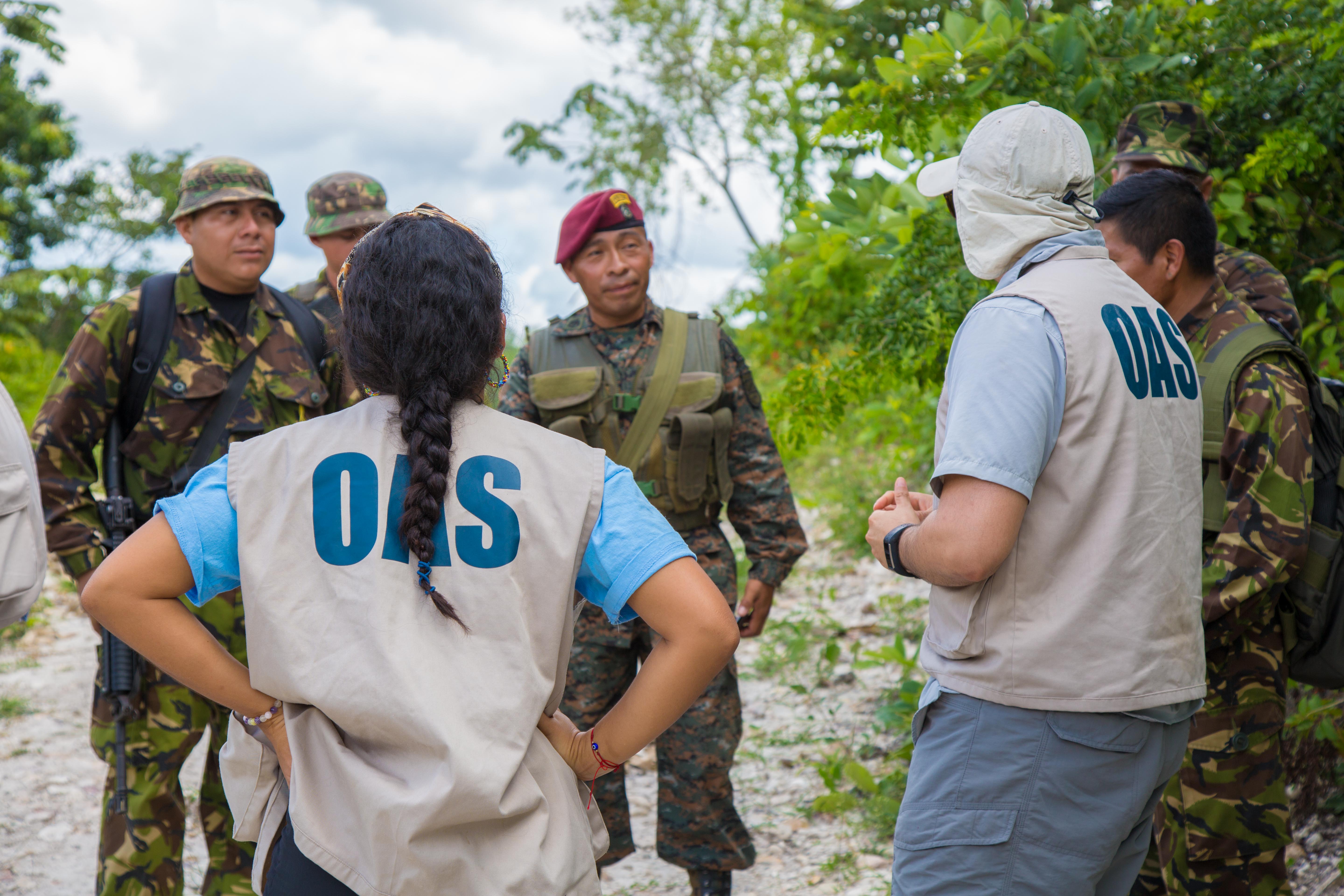 |
In the course of the year, operational coordination meetings between the Belize Defense Force (BDF) and the Guatemalan Army are held with the participation and support of the OAS/AZ Mission. Likewise, special meetings between the two armies are arranged at the headquarters of the OAS/AZ Mission to coordinate to standardize the geographic names used in the AZ, establish their place on maps, and identify sensitive areas. Technical support for use of the GPS devices previously given to the armed forces is also provided throughout the year.
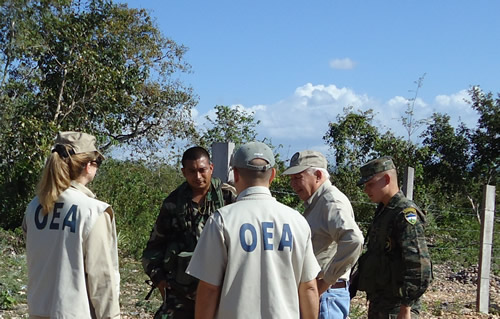 |
The Office works in close coordination throughout the year with the PAIGH–a body of the inter-American system to seek cartographic support and precise localization on AZ maps based on information gathered in the field during verifications.
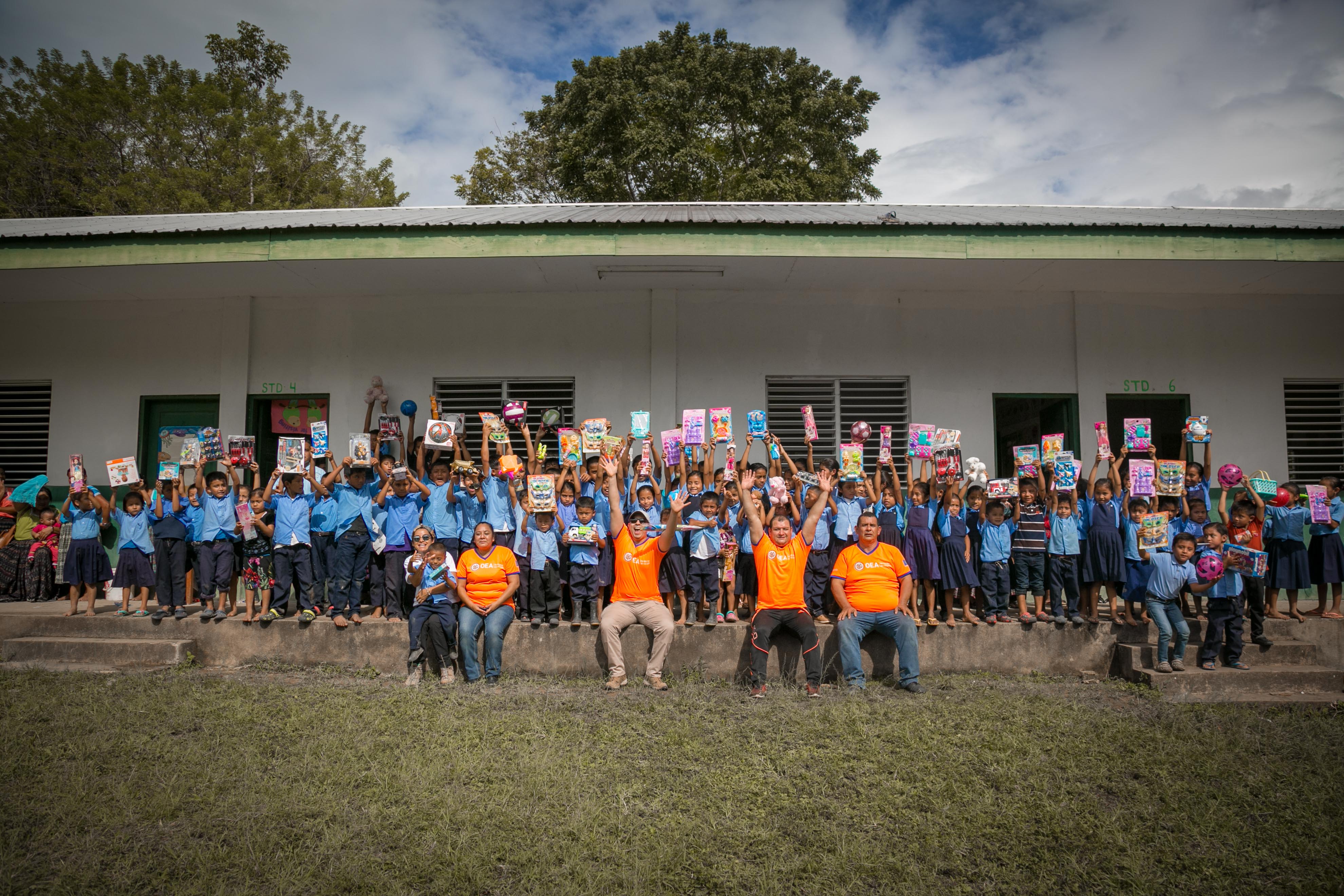 |
In harmony with the Confidence Building Measures, the OAS/AZ Office continually looks for ways to strengthen cross-border relationships and assist the communities directly affected by the territorial differendum. Support for individuals, communities, and institutions in the AZ has been provided in the form of: provision of fuel for transportation, food, travel tickets, donation of school supplies and toys, and overnight shelter. Recipients of assistance have included: schools, fire fighters, hospitals, and needy families whose situation is related to incidents or the consolidation of confidence‐building measures in the Adjacency Zone. Most recently, computers and other learning equipment have been donated to schools in the AZ in addition to the supplies provided through the Culture of Peace Program.
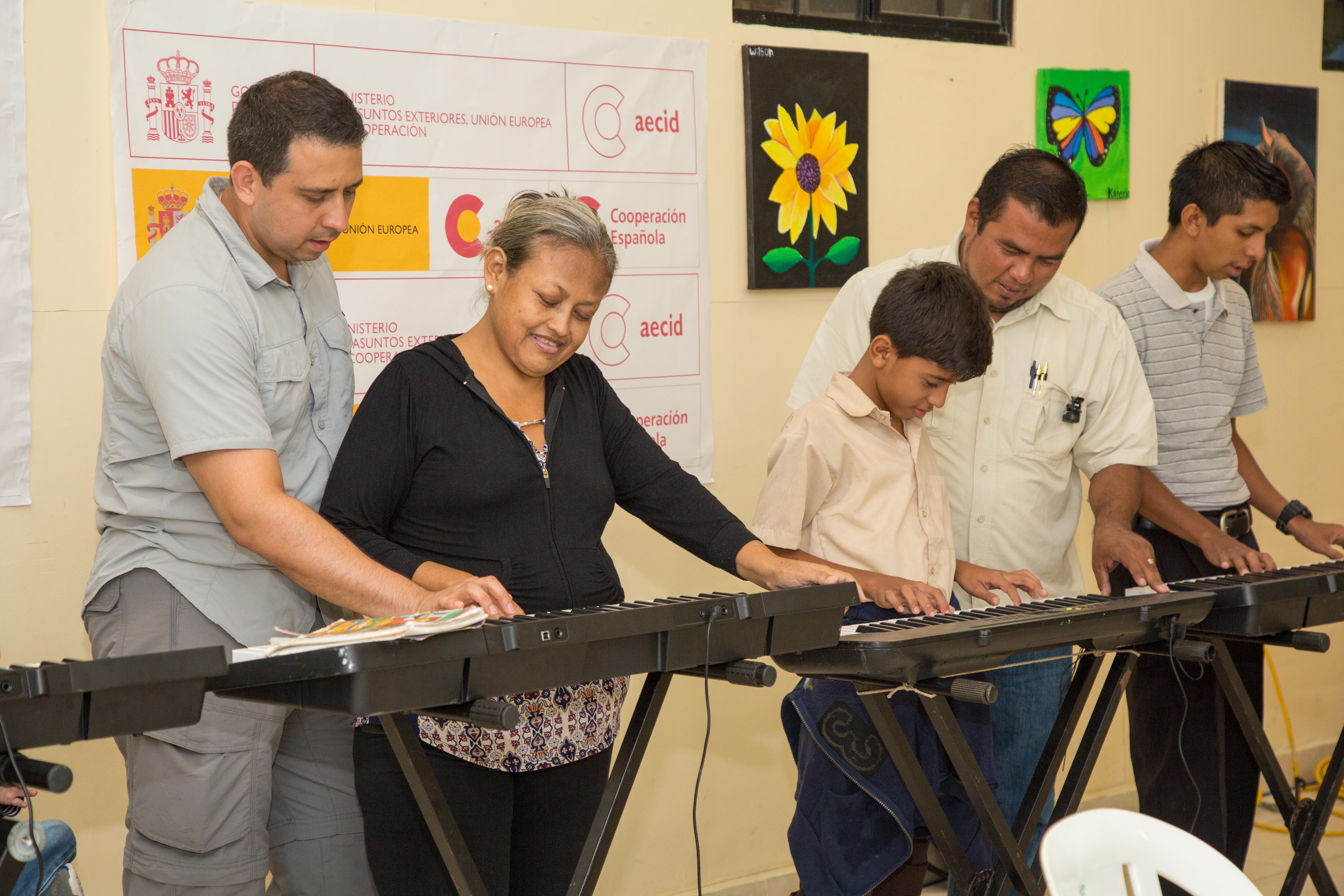
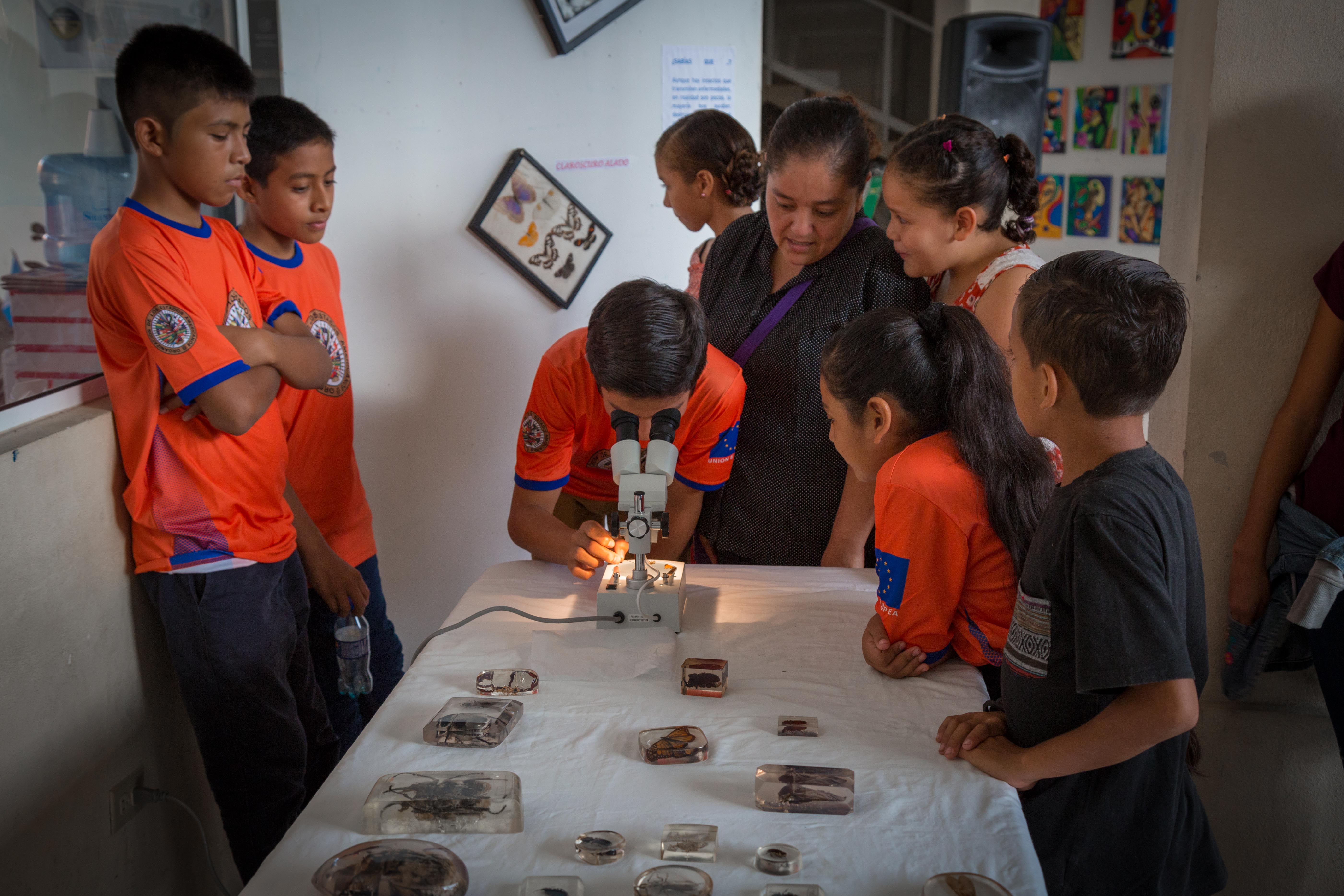
Support for children and youth is part of the Mission’s ongoing efforts in the Belize and Guatemala Adjacency Zone geared towards the promotion and development of a culture of peace. To this end, and in coordination with the Mayors of the communities on either side of the Adjacency Line, Melchor de Menco and Benque Viejo, the OAS/AZ Office will execute a culture of peace program that will run through the year. The program will consist of music (wind and string instruments), singing, painting and theater workshops and training programs for Belizean and Guatemalan students resident in the area.
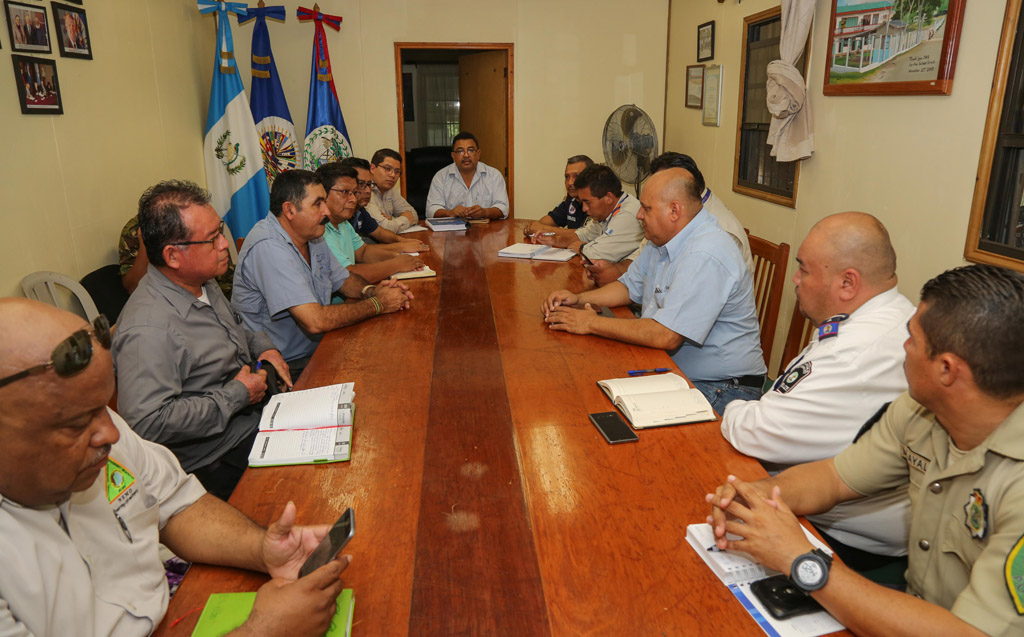
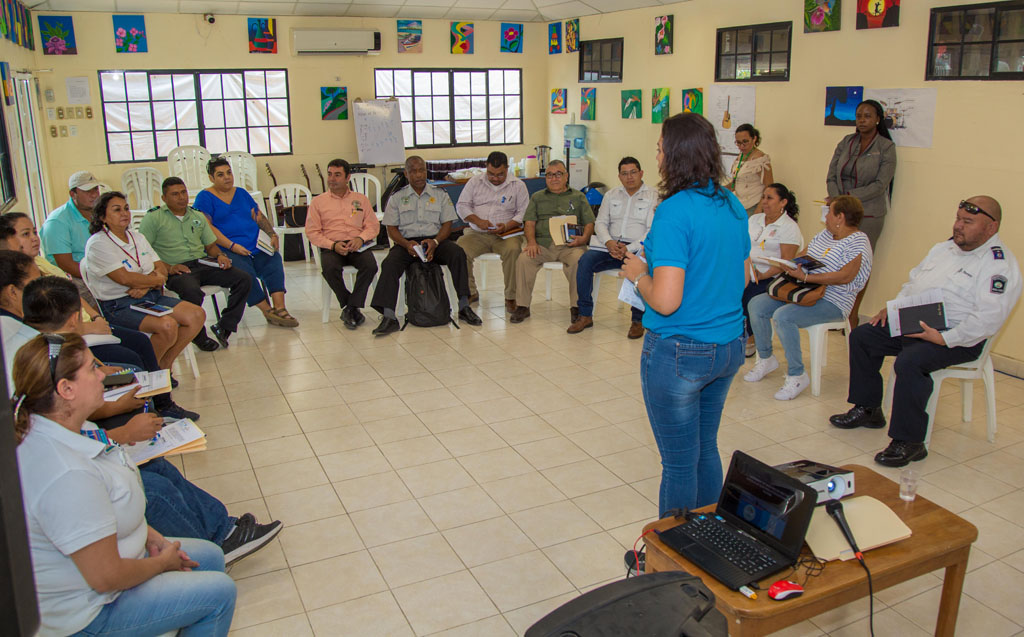
Activities are advanced in support of coordination between the agencies of the two countries through the provision of space and management services for meetings of NGOs, local governments, and various public agencies of Belize and Guatemala, which take place at the OAS/AZ Mission. Said meetings are held by natural disaster response bodies, institutions responsible for forest reserves, and the municipalities of the two countries, as targets for ongoing support.
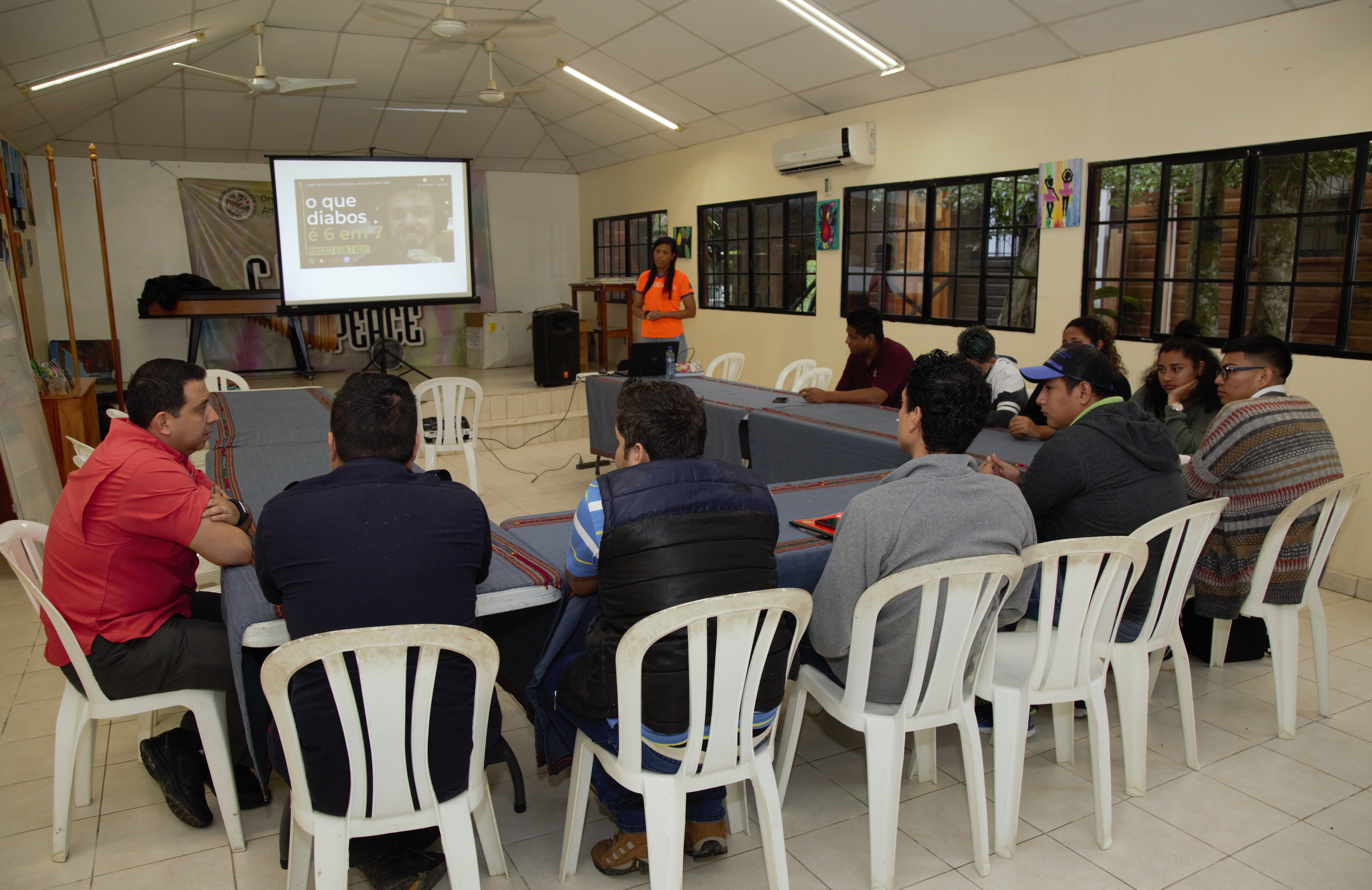 |
A new mechanism for dialogue and exchange among youth in the Belize-Guatemala Adjacency Zone on issues of mutual interest. The youth-run podcast, administrated and operated at the OAS / ZA Office under the Culture of Peace Program, serves as a platform for young people to share their experiences and ideas, and to communicate with their peers and the community in general. Through this innovated format, the reality of how the younger generation of the ZA works together for peace will be shown.
The podcasts will highlight the positive interactions and dynamics between youth on both sides of the AZ and their experiences with the Culture of Peace Program. Each podcast addresses a preselected topic and sessions will alternate between English and Spanish, helping to build confidence, communication skills, and foster dialogue and exchange between the youth and the AZ communities.
Follow us: www.oas.org/the-zone
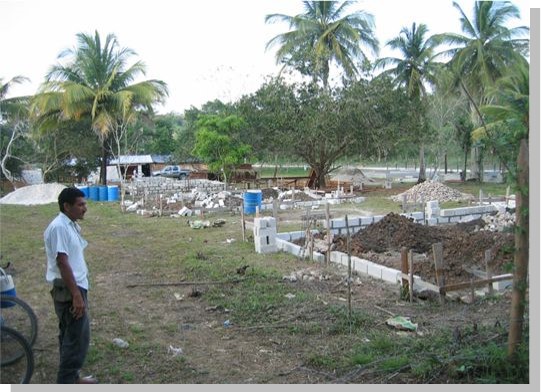
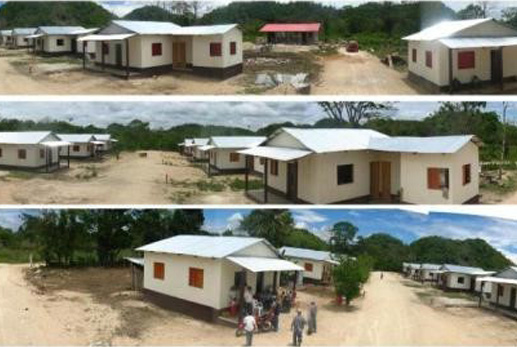
Another important task of the Office has been the execution of community resettlement projects, such as the Nueva Judá and the Santa Rosa Community Resettlements. These resettlement projects included the entire relocation of these communities from their former locations in the Belize Administered Adjacency Zone to the new sites in the Guatemalan Administered Adjacency Zone. The project involved the construction of houses and the installation of their basic services, as well as support to move their crops of corn and beans harvest. In addition, moving of household goods and possessions were carried out with all necessary logistical support in various stages. Finally, all the precarious houses and community infrastructure in the old settlements were completely demolished, and the new settlements included not only new housing with potable water for the communities but also new roads, new schools, multipurpose community halls and areas for sports and recreation for the children; and all the final administrative steps for titling in the trust for the parcels earmarked for agriculture and the green forest areas. In addition, support was sought from agencies of the central government of Guatemala and international cooperation sources for projects for agricultural diversification and sustainability for the families in their new settlements.
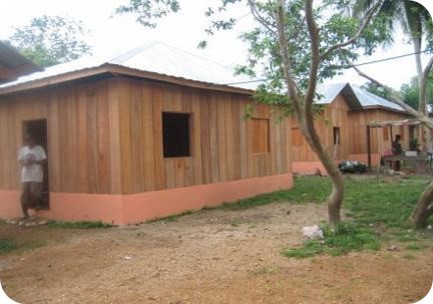
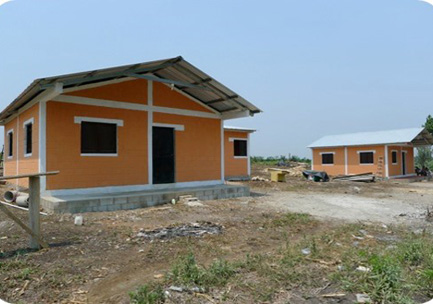
In conclusion, the Office of the OAS General Secretariat in the Adjacency Zone provides an alternative for mediation and easing of tensions in the area. Its presence ensures a trustworthy body to investigate any incident in the AZ and provides a go-between in the AZ for coordination and activities between the armed forces, police, and other government agencies in Belize and Guatemala.
Report on the Resettlement Project - The New Santa Rosa Community, Poptun. Apri 21, 2008
English| GERMANY | ||
| Argentina | ||
| Brazil | ||
| Canada | ||
| Costa Rica |
| Ecuador | ||
| El Salvador | ||
| European Union | ||
| Spain | ||
| United States |
| Honduras | ||
| Jamaica | ||
| Japan | ||
| Mexico | ||
| Nicaragua |
| Norway | ||
| Panama | ||
| United Kingdom | ||
| Sweden | ||
| Uruguay |